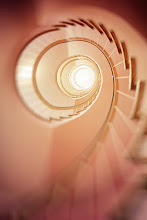Italy’s Lucia Rinaldi has honed a skill that most people avoid, she’s learned to embrace the absence of comfortability. To be more precise, Rinaldi is a cinematographer who recognizes her own area of comfort while constantly seeking out an understanding of the vantage of other cultures and filmmakers. It’s an admirable and enviable approach for any filmmaker as the more your audience recognizes themselves in your art, the louder it resonates. Across Europe, Asia, and America, Lucia has practiced her craft, taking note of the differing creative dialects of her peers and what this says about a culture’s mindset. For her, this constant state of sculpting and reinvention is the most enjoyable part of her work. The appeal of her work across cultural borders is evident in award-winning films like Plastic Love (winner of Best Cinematography at the New York Awards), The Doll (Best Cinematography short at Canadian Cinematography Awards), recognitions for The F Word at the Asian Cinematography Awards, and many others. With the film industry increasingly thriving on international collaboration, Lucia Rinaldi is a cinematographer who is laying the foundational standard of this in modern film.

Cinematographer Lucia Rinaldi
|
| Indie production house WAD had been so impressed by Lucia’s work as DP on the 1977 music magazine ad that they invited her to take on the cinematographer role and collaborate with director Tom More on The Doll. She recalls, “They knew what type of stories I’m into and what cinematography I favor. This project was right up my alley and I couldn’t be happier that they gave me a spot on this project that I value so much. When they presented me with the script, I immediately had a clear idea of the color pallet of the movie and a sense that very first and last scenes of this story were truly evocative of the mood of the entire piece. Tom [Moore, director] was very open to full collaboration and we talked out each scene together. We specifically wanted the first and last scenes to feel unsettling, dark, and inviting at the same time.” |
 |
| Finding the perfect perspective during filming |
Rinaldi used a darker low key light and darker tones for these two impactful scenes. The film begins with an unknown man tossing a plastic bag into a lake; one which is later discovered by a fisherman who is curious to discover its contents. The final scene is the bookend and the connection of the loop in the story as we see the same fisherman drive to the lake and toss the same plastic bag in the lake, exactly as seen in the beginning of the film. There’s an intriguing tale between these two confusing and enlightening scenes. The Doll owes a great deal of its mystery to Rinaldi’s strategy of nearly exclusive use of natural lighting. Her design was carefully calculated and stands out as a stark contrast to the more common controlled environment which is today’s status quo. Lucia concedes, “I certainly had to step out of my comfort zone in regards to lighting for The Doll. I’m used to relying on film lighting almost entirely but this project made me face the fear of nature’s light and how unpredictable it can be or can look.” What this DP achieved for the story is the manifestation of an environment which makes the audience question the natural forces occurring within the story and in the real world. The resulting effect is that the viewer willingly offers a suspension of their concept of reality for the duration of the film, an immense contribution in terms of accepting the premise of this story.
 |
| Lucia on set |
When questioned about whether The Doll is ideally paired to her own personal style as a cinematographer, Lucia offers, “I used to always ask myself what my style was. As I took on more productions and grew in my experience and perspective, I understood that my preference is to possess a chameleon’s footprint as a cinematographer. I want the story to be the focal point without taking the attention away from it by having incredibly stylized lighting or camera movements. This is a quality I admire in some of the most famous cinematographers. I feel that the most elegant cinematography is that which is incredible but doesn’t distract the audience in focusing on its own greatness.”
The Doll is the uncommon story of a man who leads a solitary life among his fellow townspeople, void of any real connection. Indicative of just how uncommon is the fact that he falls in love with a doll and this relationship comes to an end, necessitating some drastic means to do so. The link that allows the audience to accept these occurrences as reasonable is the visual world which Lucia Rinaldi establishes.
Written by Kelly King












Leave a Comment